Insects are a type of arthropod found in huge numbers all over the world, with a recorded one million species and an estimated further four million uncategorised species. They can be distinguished from other arthropods by their body, which is split into the head, the three-segmented thorax and the many segmented abdomen. They also have six legs and usually one or two pairs of wings.
They are found in high abundance across every habitat with the exception of oceans. This is somewhat due to their diversity, having such a range of characteristics, from parasitic insects to flying, running or swimming species. They also have many adaptations which allow them to survive in extreme conditions. As invertebrates they have a thick waxy exoskeleton which prevents them from drying out in hot habitats, and they can use their antennae for touch, smell and taste, eliminating the need for high light levels. Some insects can even create flashing lights or imitate other insect species to minimise predation.
Did you know that insects don’t have lungs but breathe through openings called spiracles found along the thorax sides? Narrow tubes called tracheae then transport the air around the body. Some aquatic insect larvae even have gills, allowing them to take oxygen from the water.
Not only are insects vital to their ecosystems as part of the food chain, pollinating plants, decomposing plant and animal matter and providing an important food source, they are also beneficial to humans. They can provide useful substances, control pest insects and attract bigger species. For example, did you know that an estimated 400-500 million tonnes of insects are eaten by birds every year? Insects are also hugely beneficial in assessing environmental quality, often used as indicators for water quality and soil contamination assessments as well as being the basis for biodiversity studies.
Large Red Damselfly
Damselflies are brightly coloured insects that can be easily spotted above the surface of the water and amongst vegetation.
As its name suggests, the large red damselfly is a bright red coloured insect with black banding.
They breed and hunt along highly vegetated waterways, finding larger insects to consume for their diet.
This medium sized damselfly can grow up to 36mm and it is one of the most commonly seen damselflies along UK waterways.
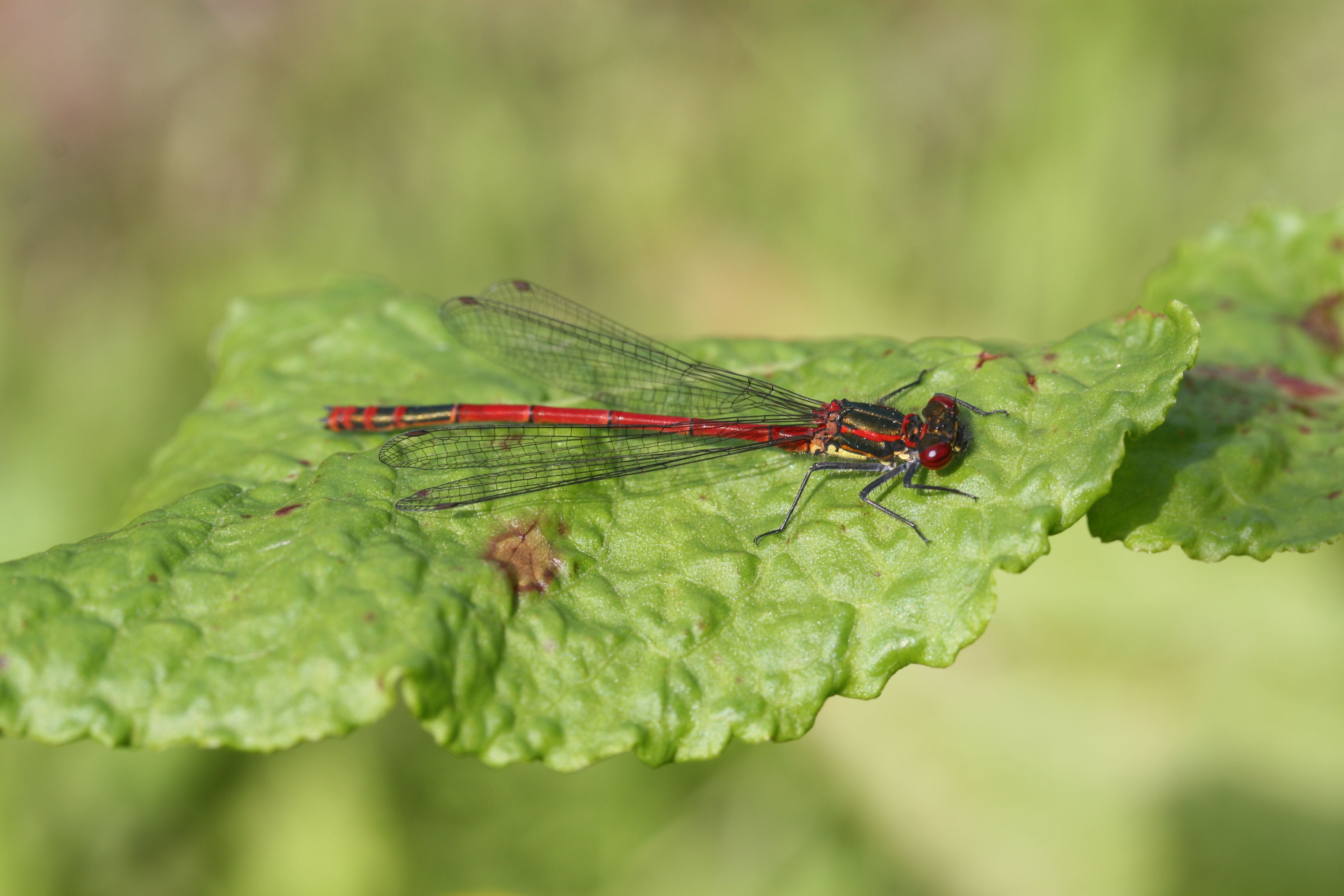
Common Blue Damselfly

These widespread damselflies are pale blue with banks of black along the body. Males of the species can be identified by a button shape mark on one body segment.
Most commonly found in gardens, ponds and along waterways, this species are the most abundant damselfly found in the UK.
The common blue damselfly is slightly smaller than the large red damselfly, growing up to 32mm compared the red species average length of 36mm.
Although they are smaller, they are an aggressive species, territorially defending their eggs from both their own and other species.
Emerald Damselfly
These medium sized metallic green damselflies live along still waterways with abundant vegetation.
Males can be easily identified by their blue coloration compared to the light beige sections found on the underside of the female of the species.
The 38mm long Emerald damselfly can be seen from June to September throughout the UK.
Did you know these impressive damselflies can be distinguished not only by their colourings but their ability to hold its wings half-open when perched, unlike other damselfly species, which hold their wings parallel along their body.
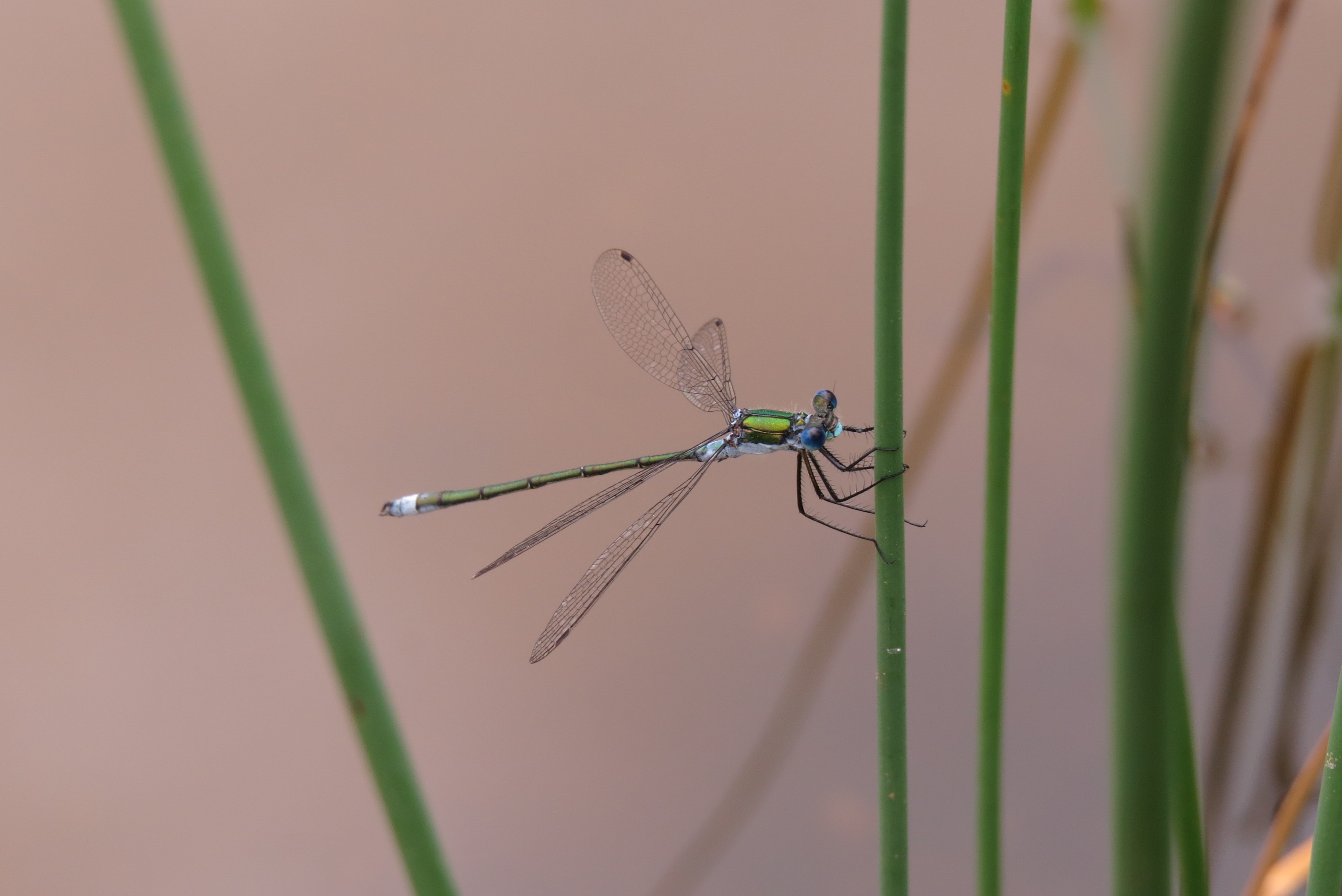
There are many species of damselfly in the UK. To learn more about them visit https://www.wildlifetrusts.org/wildlife-explorer/invertebrates/damselflies.
Emperor Dragonfly

These dragonflies are one of the largest in Europe, up to 78mm long with a bright blue body, green eyes and thorax and black central stripe running down its body.
Emperor dragonflies prefer well vegetated slow moving or still waterbodies and are rarely found away from the water.
They are widespread and can be seen in flight from June to August. The females lay their eggs on floating pondweed while the males are very territorial and constantly battle to obtain suitable breeding sites.
Did you know, these colourful dragonflies rarely settle and have the impressive ability to catch and eat its prey during flight?
Red Admiral Butterfly
This widespread species, easily identified by its red, black and white markings on the wings, is frequently found in gardens and flowery landscapes in urban and rural areas.
Red Admirals are frequently seen from spring to early autumn, when the majority of the species migrate south to warmer environments, with some staying to hibernate.
They feed on flowers and fallen fruit through their vegetated habitats, laying eggs on the ends of nettles, providing young caterpillars with a food source when they hatch.
To learn more about all the life stages of red admirals visit https://www.woodlandtrust.org.uk/blog/2020/04/red-admiral-identification/
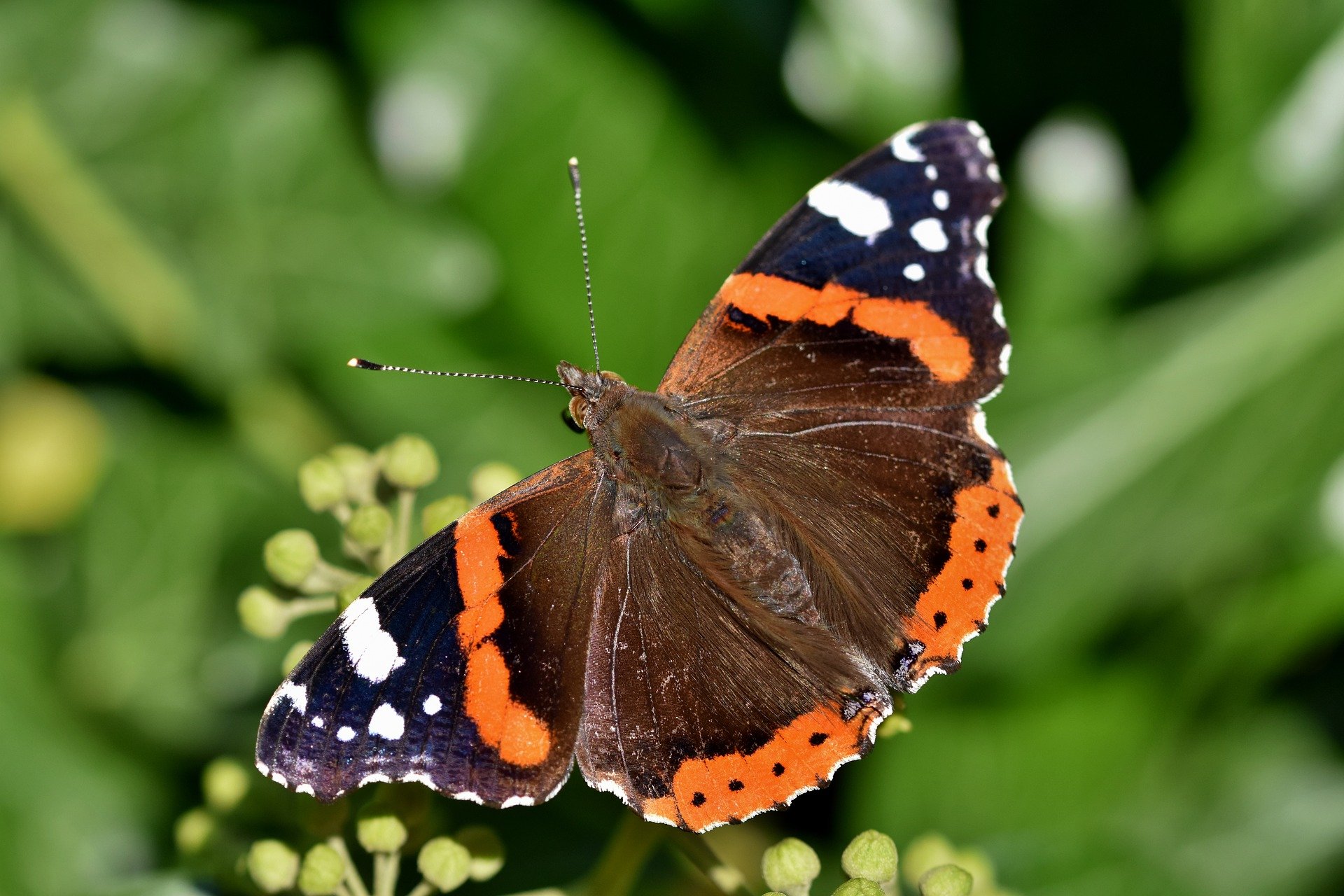
Holly Blue Butterfly
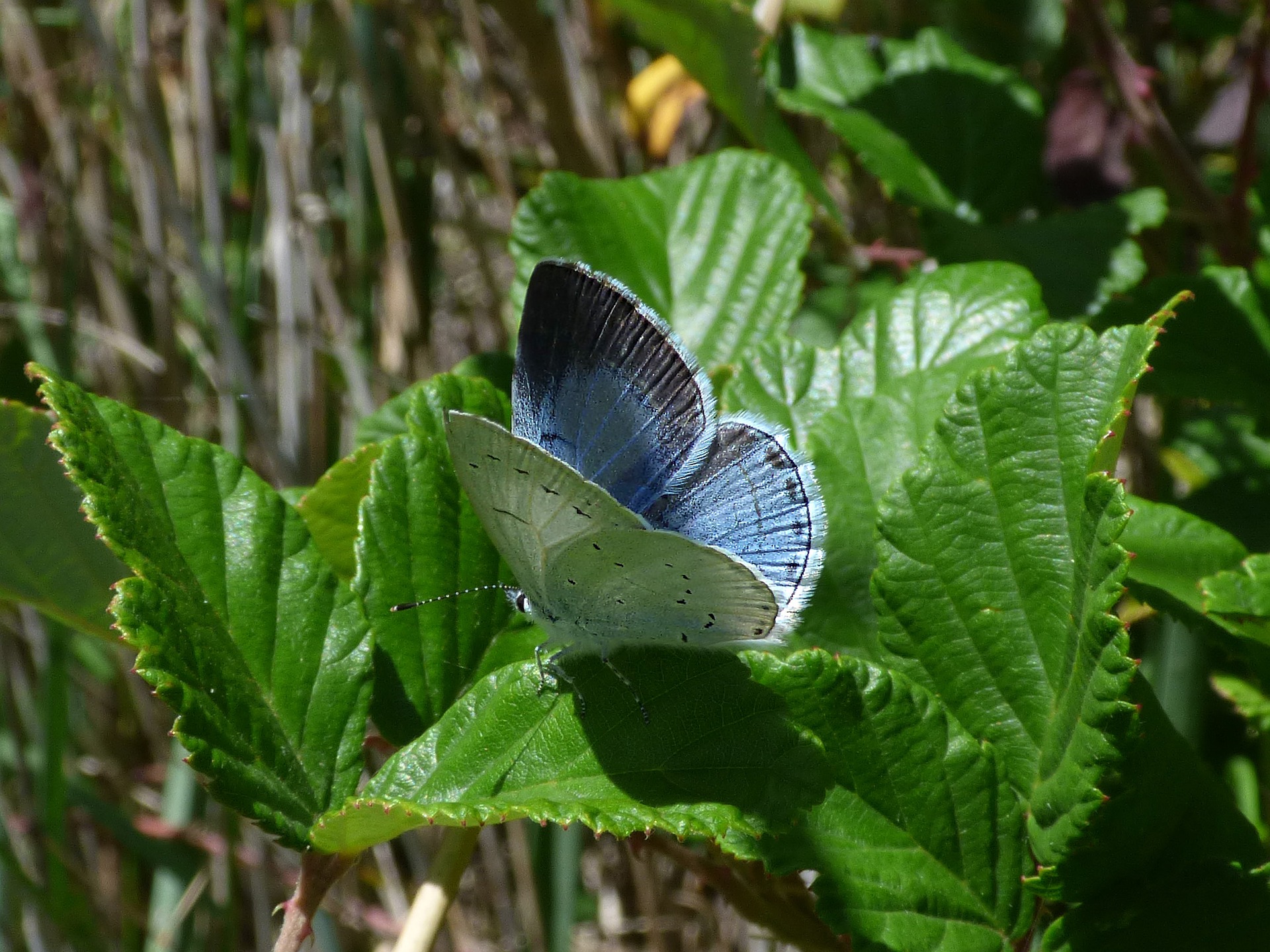
As the most common blue butterfly in the UK, this bright blue species can frequently be seen in woodlands and gardens from March to May and July to September.
Holly Blue butterflies can be distinguished by their bright blue colourings with black wing edges, often seen on nectar rich plants feeding on honeydew and sap.
They lay their eggs on flower buds on holly bushes, making caterpillars commonly found on either holly or ivy.
Did you know that numbers of Holly Blue butterflies can dramatically fluctuate from year to year due to a parasitic wasp? This wasp species grows inside the butterfly at larval stage, killing it and causing the butterfly species’ abundance to decline. Interestingly, as the wasp causes the abundance of butterflies to decline, the wasp species itself declines the next year from lack of prey. Once again leading to an increase in the butterfly species, causing a repeating cycle year on year.
Comma Butterfly
These orange butterflies with brown spots can be easily identified by its brown edged scalloped wings. It is given its name from a silvery comma shaped marking on the underside of one of its wings.
The abundant Comma butterfly feeds on flowers and fallen fruit through woodlands and gardens. Although distinguishable by its ragged wing edges, these butterflies are well camouflaged, appearing like fallen leaves as adults and bird droppings as caterpillars.
Notably, these butterflies have a more flexible life cycle than others, choosing to either hibernate immediately or breed straight away, depending on the weather.
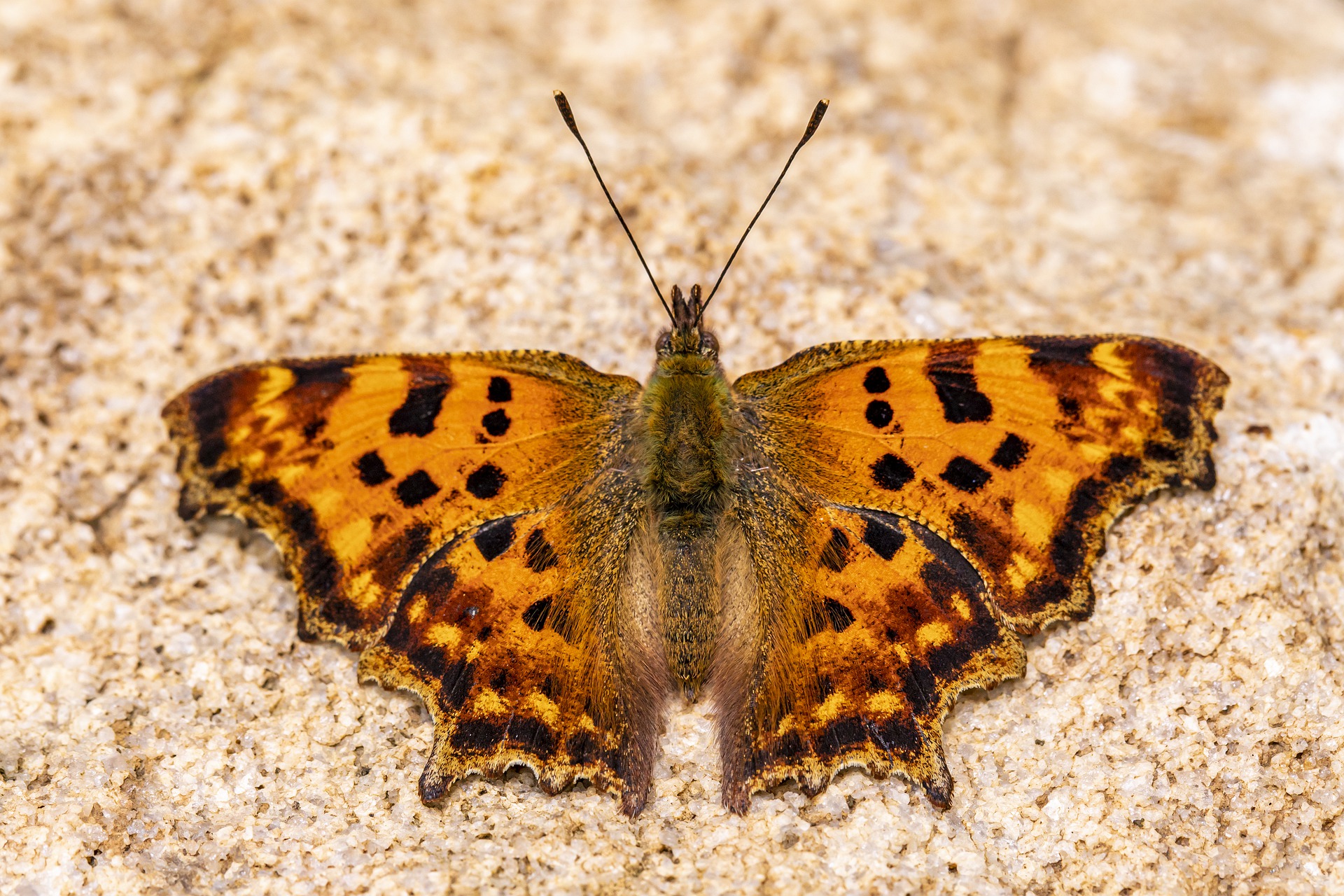
Small Tortoiseshell Butterfly

These butterflies are a reddish orange colour, distinguishable by the square black, yellow and white patches along its front edges and dark fringes lined with blue spots.
This common species has been on decline over recent years. Perhaps due to its need for nectar rich flowers that would be introduced in wildflower meadow creation projects around the UK.
Did you know the small tortoiseshell caterpillars are black with two yellow lines along their sides to warn predators they are poisonous and ensure their survival to adulthood?
Seven Spot Ladybird
Ladybirds are a common species of beetle found all over the UK from March to October. Amongst the 40 species found in the UK, the most abundant species is the seven spot ladybird, along with the two spot species with the same colourings.
Their bright red colour warns predators away and they can also exude a pungent fluid as an extra defence mechanism.
Ladybirds can be found in gardens and parks, hibernating in small crevices such as hollow leaf stems, and emerging in April to breed and prey on aphids and small insects.
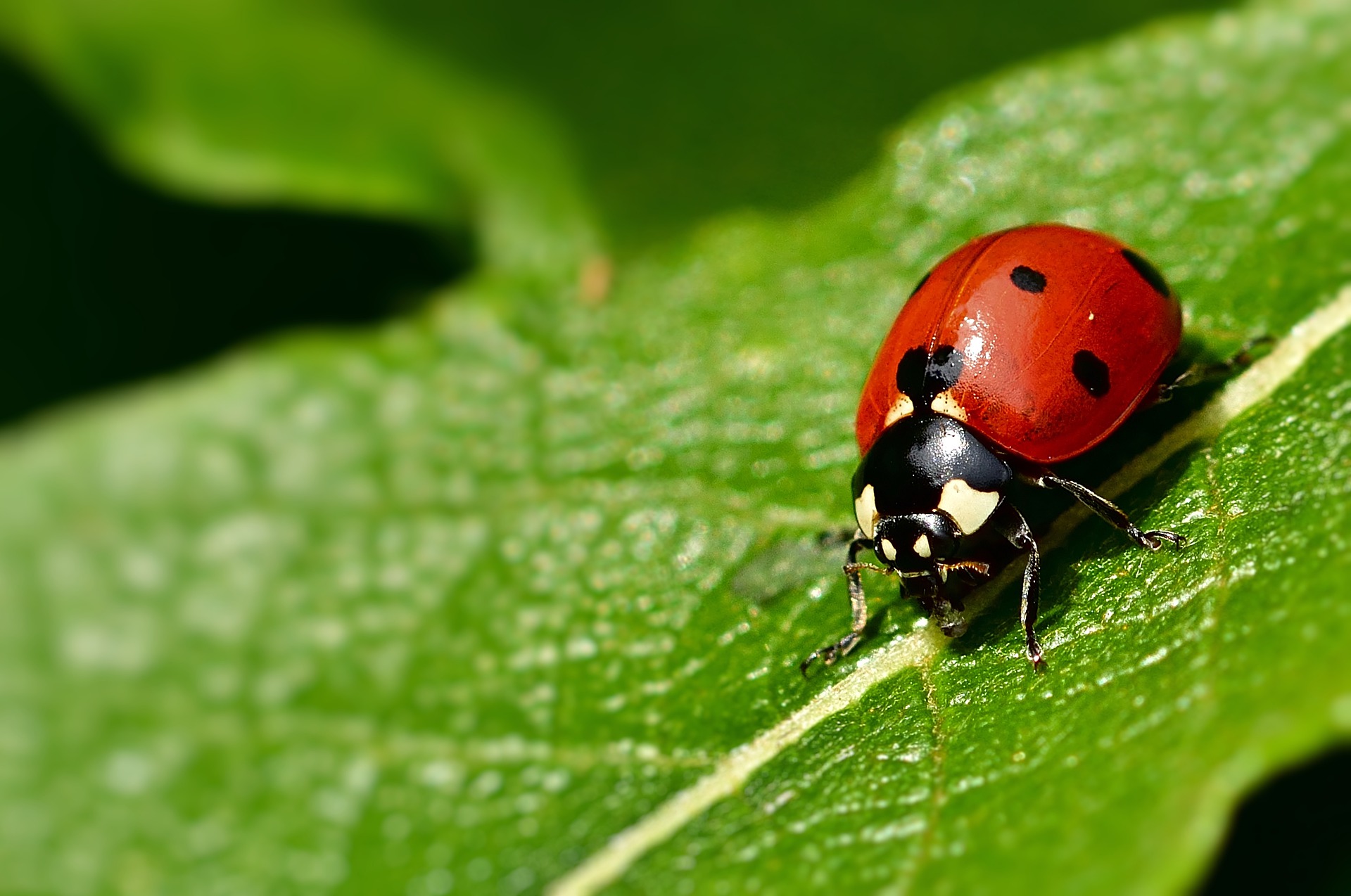
Harlequin Ladybird
.jpg)
These variable ladybirds normally have red spots on a black body but can have up to 19 black spots on a red or orange body. The red coloured variety can be distinguished by a white triangle in the centre of its head.
Harlequin ladybirds are an invasive non-native species which outcompete native ladybirds throughout the UK.
Being abundant from April to October these ladybirds outcompete the native species for food as well as preying on their larvae and eggs.
.jpg)






